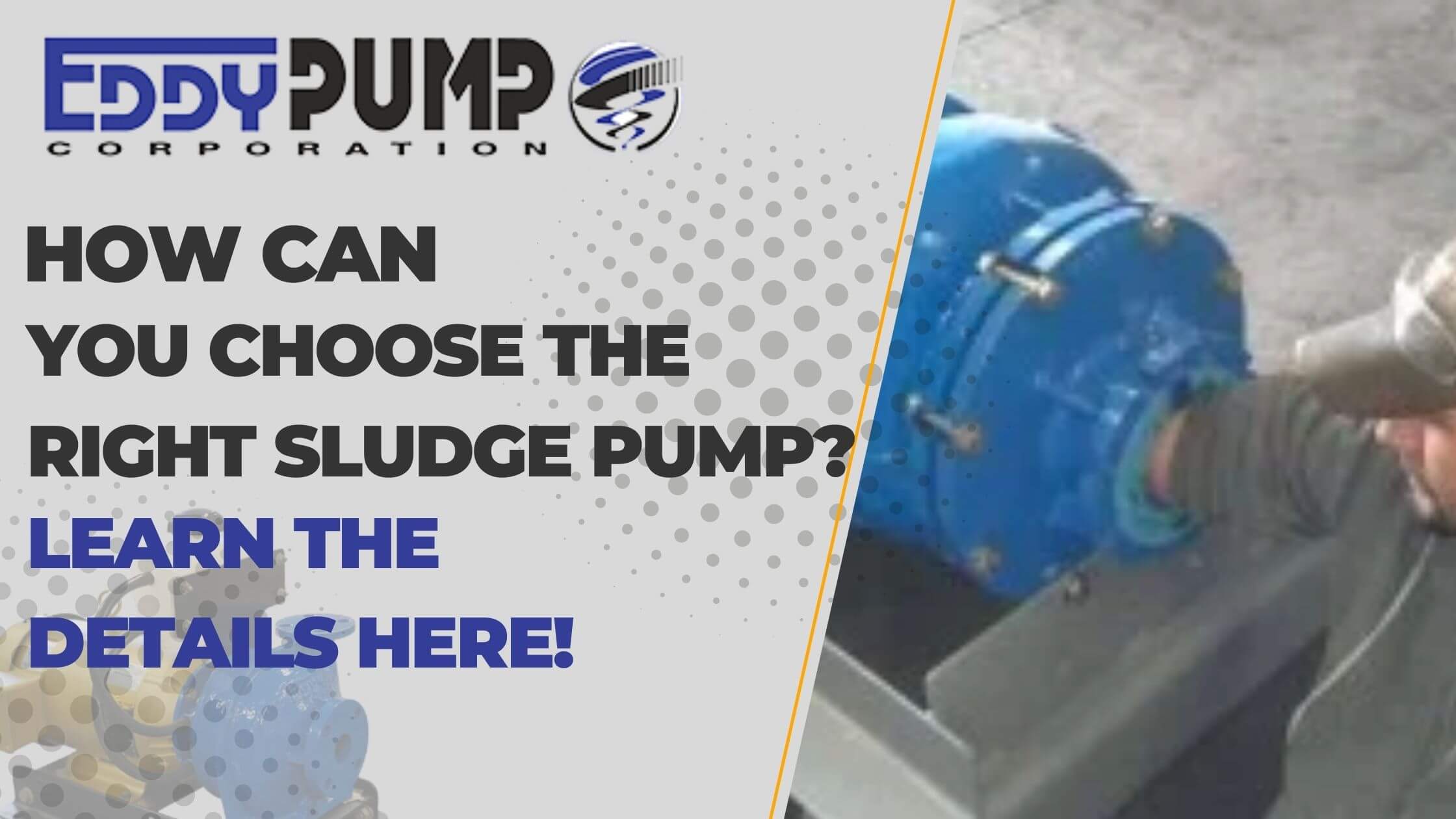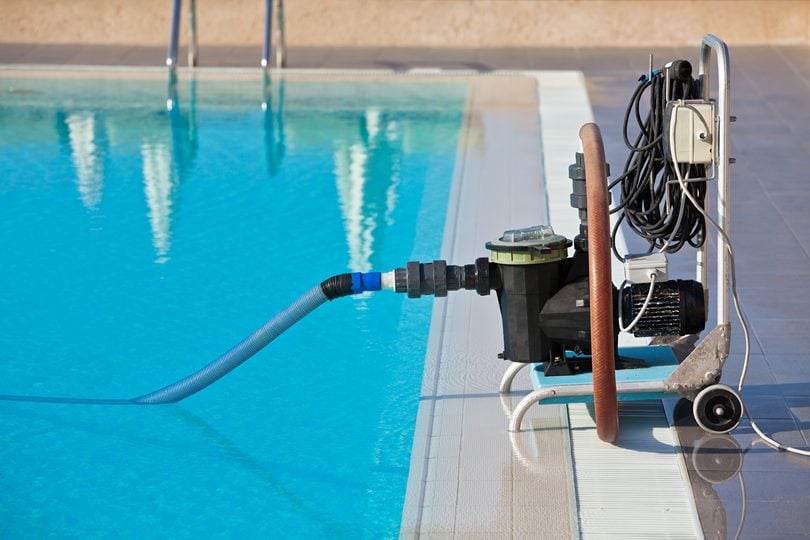
Various waste materials ranging from plastic, metal and simple mud to weed often clog the bottom of ponds. This reduces the quality of the water and affects the depth of the pond. A sludge pump helps remove these unwanted materials. Submersible sludge pumps often have a capacity of around 420 GPM and help remove clay, mud, etc. from the bottom of ponds.
This process becomes effective only when you use the right pond sludge pump. And choosing the right sludge pump for ponds can be a challenging task. From checking multiple factors to learning about different pump types, there are many things to consider.
Want to know more about sludge pumps? Contact EDDY Pump or check out the wide range of products on our site.
The article will help you select the right pump for pond sludge removal.

Sludge pump
What is sludge and why should it be removed?
Sludge is a thick, sticky material that forms at the bottom of ponds due to industrial sewage treatments and wastewater treatments. It is made of organic materials like food particles, paper, and plant substances. In some cases, you can find inorganic substances like metal, plastic, and solvents too.
A quality sludge pump helps remove these unwanted clogging materials from the pond. If the material is thin, it’s slurry. And for removing such materials, a slurry pump does the job.
Check out this blog to know how a sludge pump works.
Types of pond sludge pumps
You can classify sludge pumps into three major types. They are:
- Trash pumps: These are ideal for removing solid waste, including twigs, leaves, and pebbles. The pumps include broad interiors, which let the waste pass through the pump’s inside without clogging it. These pumps also reduce the chances of friction due to abrasive material.
- Semi-trash pumps: These pumps are the best for removing small solid waste that is 5 to 8 inches wide. Hence, it is best to let sandy and slightly muddy water pass through it. To ensure no risks of clogging, you should use strainers with 5- to 8-inch wide holes.
- Diaphragm pumps: Diaphragm pumps come with a diaphragm that creates a suction force. This suction force is used to push into and through the housing. Since these pumps can handle various abrasive liquids very well, they are ideal for industrial sludge management applications.
Apart from these major types, there are other options like progressive cavity pumps, rotary lobe pumps, etc. All of these are ideal for handling fluids with high viscosity.

1-inch sludge pump
Factors to choose the right sludge pump
We have discussed so far how sludge pumps are classified. Depending on the nature of your application, you can select the type. However, you must also consider a few factors while choosing the pump for removing sludge.
It is important to consider the nature of the sludge before buying the sludge pump to remove it. For example, a pump with a high flow rate is ideal if the sludge has too much liquid. Similarly, if it is for removing water with a high amount of sand, a pump with centrifugal force is recommended.
Apart from the density and thickness of the sludge, here are some more factors to consider before choosing the right sludge pump:
- Required rate of flow
- Necessary elevation of the pump as per the fluid source (flooded suction, submersible suction, and self-priming pumps)
- Size and power requirements of the pumps
- Construction materials suitable to the application
Here’s a video on choosing the right pump for your needs.
Submersible vertical slurry pump
Why choose EDDY Pump?
Established in 1984, EDDY Pump has been well-known for its patented technology. EDDY Pump Corporation offers a wide range of quality sludge pumps. We also provide high-quality dredging equipment and accessories. Explore our wide range of products and choose the one that fits your needs.
Wrapping it up
Selecting the right sludge pump for your pond is crucial for effective sludge removal. Pond size, sludge type, and pump capacity are important factors when choosing a pump. For example, a 3- to 4-inch sludge pump is ideal to remove around 2 inches of sludge from a pond.
For your slurry pump, dredging equipment application in construction, mining, chemical, oil & gas, pulp and paper, sewage treatment, and marine industries, contact EDDY Pump. Alternatively, you can also call EDDY Pump at 619-558-3250.
You can also request a free sales quote from us.
Frequently asked questions about sludge pumps
1. How do I choose the right pond sludge removal pump for my pond?
When selecting a pond sludge removal pump, consider a few factors. They are the size of the pond, the volume of sludge to be removed, the depth of sludge accumulation, and the desired level of automation. You must choose a pump with the appropriate power, suction capacity and features. They must align with the specific pond requirements. However, it is best to talk to an expert before purchasing a slurry pump or sludge pump.
2. Are there any maintenance requirements for pond sludge pumps?
Like any mechanical equipment, pond sludge pumps require regular maintenance to ensure optimal performance. This may include cleaning and inspecting the pump components, checking for any clogs or blockages, and maintaining the pump’s motor and impeller. It’s recommended to refer to the manufacturer’s guidelines for specific maintenance instructions and intervals.
3. What are the important parts of a sludge pump?
A sludge pump helps remove solid or semi-solid, mostly viscous waste materials from water. High torque motors and hose diameter are essential parts of it. They are usually used in heavy-duty applications. Also, it works best for light-duty tasks like small pond sludge removal.
4. Can a pond sludge pump be used for other applications besides ponds?
Yes, pond sludge pumps are versatile. They can be employed for sludge removal in other water bodies such as lakes, lagoons, wastewater treatment plants, and industrial tanks. They can also be utilized for sediment removal in construction sites, dredging projects, and environmental cleanup operations. Their adaptability makes them a valuable tool in different settings.

